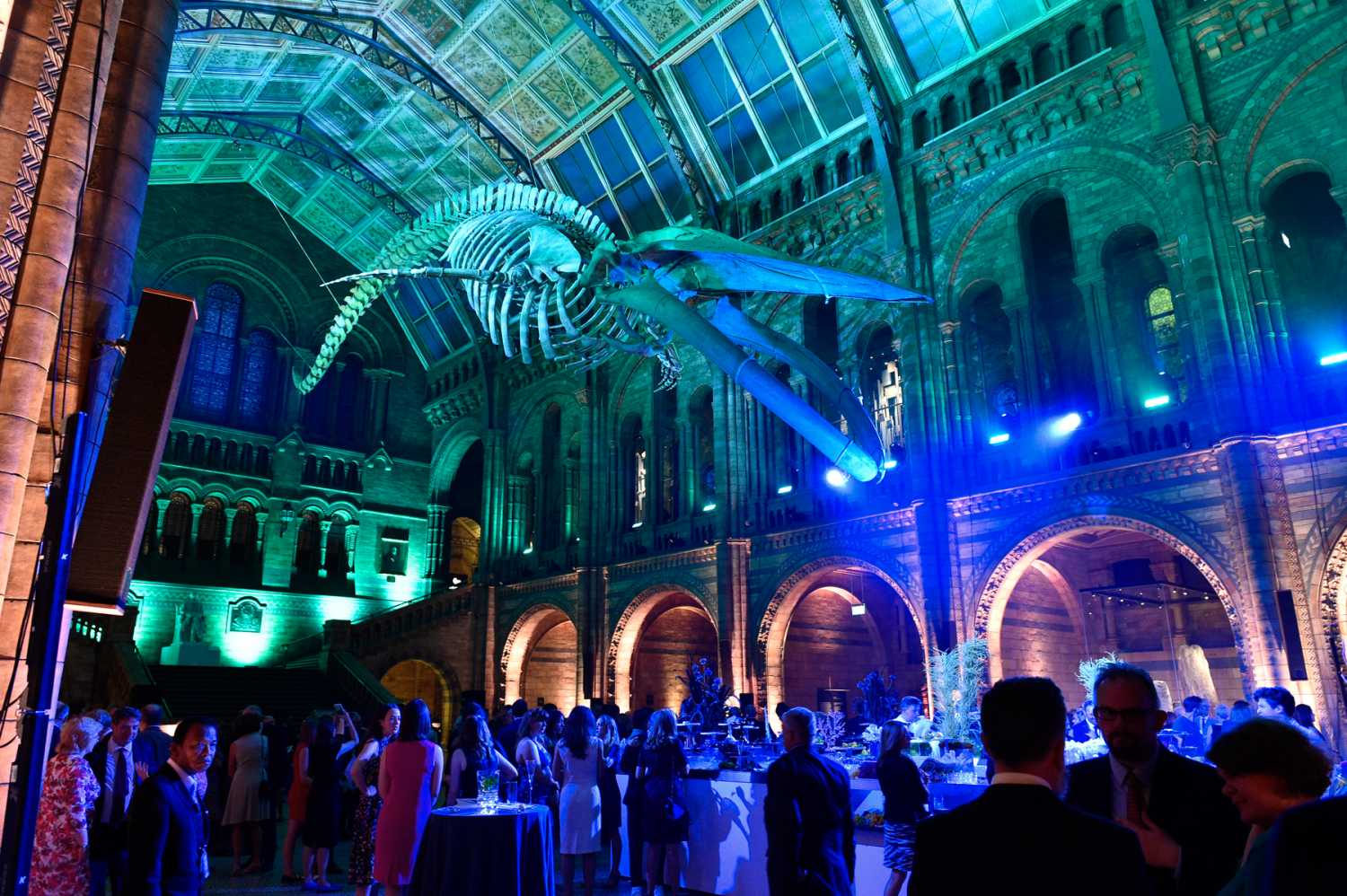Natural History Museum makes big splash
- Details

The Natural History Museum reveals a new-look Hintze Hall which features a stunning 25.2 metre blue whale skeleton suspended from the ceiling and spectacularly diving into the space. This is part of the museum’s biggest transformation it its 136-year history which includes hundreds of new specimens which have been chosen to celebrate the wonder and beauty of the natural world, from the origins of the universe, to the story of evolution and the diversity in the world today.Ten choice specimens have also been arranged in ground floor alcoves – known as Wonder Bays – including a 4.5 billion-year-old meteorite and a Mantellisaurus skeleton.
The new installation provides event guests with an opportunity to dine directly underneath the sweeping blue whale skeleton, complete with its own stunning lighting display designed by White Light.
The launch event invited 1,100 guests to celebrate the spectacular re-opening of Hintze Hall. Guests were treated to an immersive experience on arrival including an ocean-inspired star cloth draping a walk-through tunnel, with smells and sounds of the sea. The guest journey continued through a mist curtain into Hintze Hall, immediately experiencing the grandeur of the new blue whale skeleton, under which was a sea scape with caterers
Speeches were delivered by the Museum’s Chair, Director and special guests including Sir David Attenborough. The evening was punctuated by a specially commissioned musical piece performed by a 14-piece orchestra from the London Contemporary Orchestra, a solo performed by Sir Thomas Allen and culminated by a light show created by White Light.
Robert Wetherell, head of venue hire, said: “This is a hugely exciting development for The Natural History Museum and we cannot wait to see the look on our guests’ faces when they see the Whale for the first time, it is an awe-inspiring new centrepiece for the space.”
(Jim Evans)
















